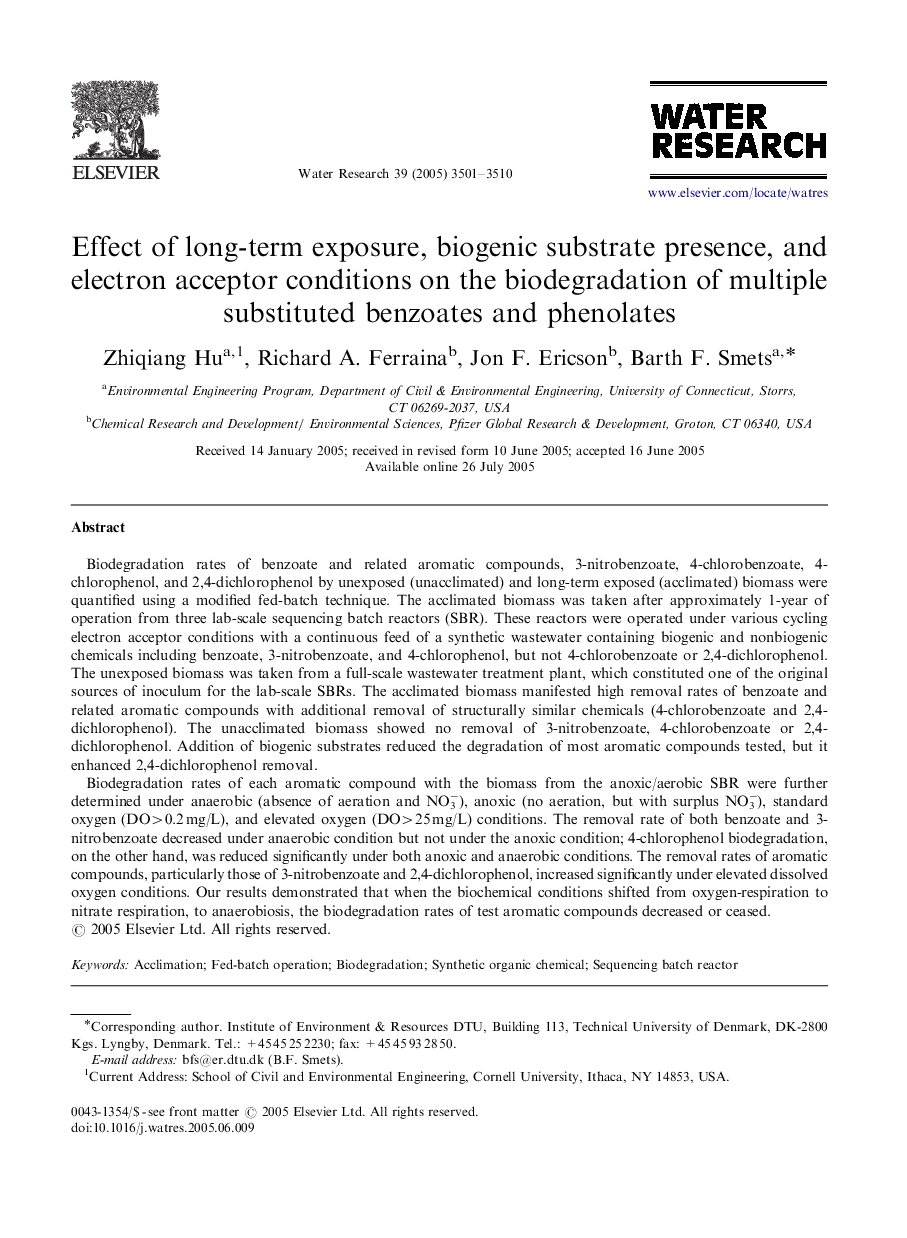| کد مقاله | کد نشریه | سال انتشار | مقاله انگلیسی | نسخه تمام متن |
|---|---|---|---|---|
| 4485173 | 1316943 | 2005 | 10 صفحه PDF | دانلود رایگان |

Biodegradation rates of benzoate and related aromatic compounds, 3-nitrobenzoate, 4-chlorobenzoate, 4-chlorophenol, and 2,4-dichlorophenol by unexposed (unacclimated) and long-term exposed (acclimated) biomass were quantified using a modified fed-batch technique. The acclimated biomass was taken after approximately 1-year of operation from three lab-scale sequencing batch reactors (SBR). These reactors were operated under various cycling electron acceptor conditions with a continuous feed of a synthetic wastewater containing biogenic and nonbiogenic chemicals including benzoate, 3-nitrobenzoate, and 4-chlorophenol, but not 4-chlorobenzoate or 2,4-dichlorophenol. The unexposed biomass was taken from a full-scale wastewater treatment plant, which constituted one of the original sources of inoculum for the lab-scale SBRs. The acclimated biomass manifested high removal rates of benzoate and related aromatic compounds with additional removal of structurally similar chemicals (4-chlorobenzoate and 2,4-dichlorophenol). The unacclimated biomass showed no removal of 3-nitrobenzoate, 4-chlorobenzoate or 2,4-dichlorophenol. Addition of biogenic substrates reduced the degradation of most aromatic compounds tested, but it enhanced 2,4-dichlorophenol removal.Biodegradation rates of each aromatic compound with the biomass from the anoxic/aerobic SBR were further determined under anaerobic (absence of aeration and NO3−), anoxic (no aeration, but with surplus NO3−), standard oxygen (DO>0.2 mg/L), and elevated oxygen (DO>25 mg/L) conditions. The removal rate of both benzoate and 3-nitrobenzoate decreased under anaerobic condition but not under the anoxic condition; 4-chlorophenol biodegradation, on the other hand, was reduced significantly under both anoxic and anaerobic conditions. The removal rates of aromatic compounds, particularly those of 3-nitrobenzoate and 2,4-dichlorophenol, increased significantly under elevated dissolved oxygen conditions. Our results demonstrated that when the biochemical conditions shifted from oxygen-respiration to nitrate respiration, to anaerobiosis, the biodegradation rates of test aromatic compounds decreased or ceased.
Journal: Water Research - Volume 39, Issue 15, September 2005, Pages 3501–3510